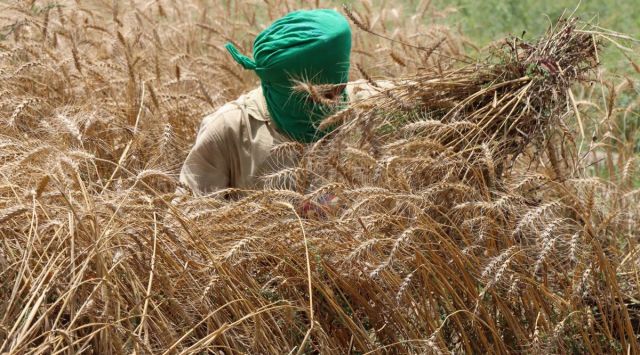NGT forms joint committee to assess impact of sand mining on agricultural land
NGT forms joint committee to assess impact of sand mining on agricultural land The Indian Express

The National Green Tribunal Forms Joint Committee to Address Sand Mining on Agricultural Land
The National Green Tribunal (NGT) has formed a joint committee to address the issue of sand mining on agricultural land and its impact on soil fertility and the environment. The NGT was responding to a request to stop sand mining on fertile agricultural land in two villages in Haryana’s Yamunanagar.
Committee Formation and Composition
In an order issued earlier this month, the NGT formed a committee to thoroughly examine all aspects of sand mining on private agricultural land and provide recommendations on the necessary environmental safeguards if the practice is to continue. The committee will consist of representatives from various organizations including the Ministry of Environment, Forest and Climate Change, the Central Pollution Control Board, the Indian Agricultural Research Institute, the Indian Institute of Soil and Water Conservation, the Chaudhary Charan Singh Haryana Agricultural University, the Central Soil Salinity Research Institute, and the Haryana State Pollution Control Board.
Key Questions and Report Submission
The committee has been tasked with answering several important questions, including whether sand mining on agricultural land negatively affects soil fertility and land value, and if it causes environmental damage. The committee has also been directed to consider whether the practice should be permitted or discontinued. The committee is required to submit its report within two months. Additionally, the committee will explore measures for land reclamation or rehabilitation to ensure the sustainability of agriculture.
Previous Court Proceedings
The NGT order highlights that farmers in Haryana had previously challenged sand mining on agricultural land in the Punjab and Haryana High Court. In 2005, the court sought the opinions of agricultural experts on the matter. The committee of experts submitted a report stating that sand mining on agricultural land had resulted in land degradation, soil erosion, and a decrease in crop productivity in the affected areas.
Information on Sand Mining Leases
The NGT has also requested the Director General of the Mining and Geology Department of Haryana to provide information on the number of sand mining leases on agricultural land that have been completed or are currently in operation.
SDGs, Targets, and Indicators Analysis
1. Which SDGs are addressed or connected to the issues highlighted in the article?
- SDG 2: Zero Hunger – The article discusses the impact of sand mining on agricultural land and soil fertility, which is directly related to the goal of achieving food security and promoting sustainable agriculture.
- SDG 15: Life on Land – The article highlights the environmental impact of sand mining on agricultural land, indicating a connection to the goal of protecting and restoring terrestrial ecosystems.
2. What specific targets under those SDGs can be identified based on the article’s content?
- SDG 2.4: By 2030, ensure sustainable food production systems and implement resilient agricultural practices that increase productivity and production, that help maintain ecosystems, that strengthen capacity for adaptation to climate change, extreme weather, drought, flooding and other disasters, and that progressively improve land and soil quality.
- SDG 15.3: By 2030, combat desertification, restore degraded land and soil, including land affected by desertification, drought and floods, and strive to achieve a land degradation-neutral world.
3. Are there any indicators mentioned or implied in the article that can be used to measure progress towards the identified targets?
- Indicator for SDG 2.4: Proportion of agricultural area under productive and sustainable agriculture.
- Indicator for SDG 15.3: Proportion of land that is degraded over total land area.
Table: SDGs, Targets, and Indicators
| SDGs | Targets | Indicators |
|---|---|---|
| SDG 2: Zero Hunger | 2.4: By 2030, ensure sustainable food production systems and implement resilient agricultural practices that increase productivity and production, that help maintain ecosystems, that strengthen capacity for adaptation to climate change, extreme weather, drought, flooding and other disasters, and that progressively improve land and soil quality. | Proportion of agricultural area under productive and sustainable agriculture. |
| SDG 15: Life on Land | 15.3: By 2030, combat desertification, restore degraded land and soil, including land affected by desertification, drought and floods, and strive to achieve a land degradation-neutral world. | Proportion of land that is degraded over total land area. |
This splendid article springs forth from the wellspring of knowledge, shaped by a wondrous proprietary AI technology that delved into a vast ocean of data, illuminating the path towards the Sustainable Development Goals. Remember that all rights are reserved by SDG Investors LLC, empowering us to champion progress together.
Source: indianexpress.com

Join us, as fellow seekers of change, on a transformative journey at https://sdgtalks.ai/welcome, where you can become a member and actively contribute to shaping a brighter future.







